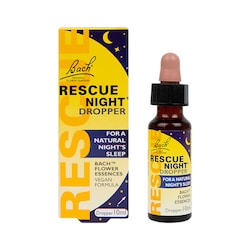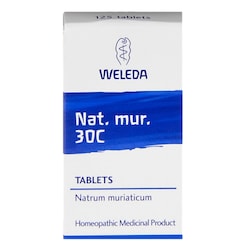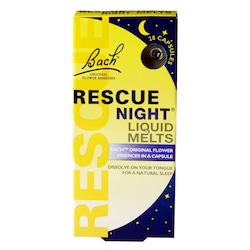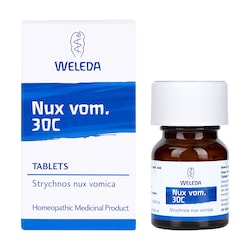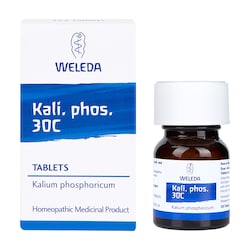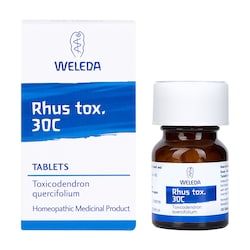20% off £30
Your guide to pulsatilla: Uses, benefits and side effects
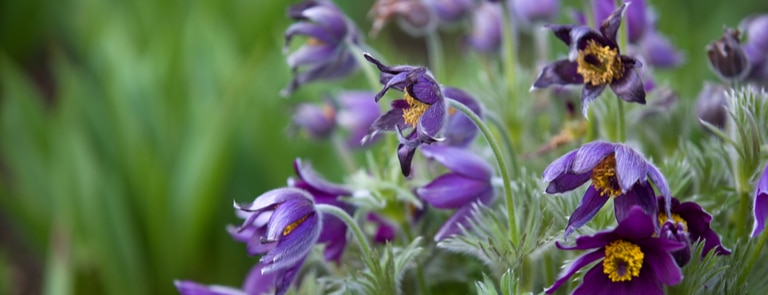
Pulsatilla is a medicinal herb which is believed in homeopathic and herbalist circles to be a potent remedy. Based on traditional use, pulsatilla is used for a range of complaints from period pain to conjunctivitis.
However, pulsatilla is also known to be an irritant when incorrectly prepared, and it isn’t usually recommended in mainstream medicine due to its potential side effects.
But what’s the truth about pulsatilla? If you’ve ever wondered what is pulsatilla used for? Is pulsatilla good for anxiety? How often can you take pulsatilla? then we have all the answers.
What is pulsatilla?
Also known as the pasqueflower, the pulsatilla is perennial plant native to Europe and southwestern Asia.1
It also goes by pulsatilla vulgaris, its scientific name, and anemone pulsatilla, after the genus it belongs to.2
When in the ground, it’s a pretty purple flower. When harvested and dried, it’s a potent herb used as a traditional medicine.
The pulsatilla plant contains a substance called ranunculin, which is converted to anemone when the plant is dried. This anemone is the medicinally active component.3
What is pulsatilla used for in homeopathy?
Pulsatilla is used in homeopathy and herbalism, both alternative medicines which proclaim to utilise the natural power of plants to create remedies for various health problems.
They are both based on traditional herbal medicine and use plants in their preparations, but there are differences in the way these two modalities approach plants.
-
Homeopathy
Homeopathy works on the theory that a plant which causes a certain symptom when taken in large amounts can, when the plant is taken in small amounts. treat cases which present the same symptom.
The plant preparations used in homeopathy are highly diluted, leaving only a small trace of the active ingredient. Research studies are lacking, and conventional medicine does not recognise homeopathy as an effective course of treatment.4
-
Herbalism
In herbalism, plant preparations are used which harness the benefits of the active ingredients they contain.5 For example, essential oils contain highly concentrated plant extracts which have been proven to have certain properties such as antimicrobial action, or the ability to reduce stress.6,7
Both Traditional Chinese Medicine and Ayurvedic practice come under the umbrella of herbalism.
Summary
- Pulsatilla is a potent herb which comes from a purple flower
- Pulsatilla is used in traditional and alternative medicine to treat a range of conditions
- It’s not usually recommended as a treatment in mainstream medicine
Uses of pulsatilla in homeopathy and herbalism
-
As an anti-spasmodic
Pulsatilla is thought to help calm muscle spasms and has been suggested to help relieve painful spasmodic conditions, such as period pain.8
There is research backing this up. Pulsatilla has been shown in one study to be an anti-spasmodic and able to smooth muscle spasms.9
-
To relieve eye conditions
In alternative medicine, pulsatilla is used for the treatment of conjunctivitis and other eye conditions.10 There is no evidence for the efficacy of the homeopathic approach, but one study saw an improvement in eye symptoms in dogs after taking a pulsatilla homeopathic preparation at a 30c dilution.11
-
To help clear vaginal infections
It’s not yet a common treatment option, but early research indicates that the pulsatilla plant may help clear up bacterial infections of the vagina such as candida.
In one study, a concentrated form of dried pulsatilla was shown to inhibit candida growth.12
-
As a sedative
Historically, pulsatilla had a reputation among herbalists as an herb that addressed so-called ‘female complaints’ such as period pain and the symptoms of pre-menstrual tension such as irritability and sadness.
For instance, a book written in 1905 describes how pulsatilla was suggested for use to combat emotional sensitivity and tearfulness in women.13
This is thought to be down to the small doses of anemone, the active ingredient in pulsatilla, acting as a central nervous system depressant, lowering heart rate and calming rapid breathing.14
There could be some truth to the claim that pulsatilla can help calm nerves. A 2013 article published in the Journal of Restorative Medicine describes pulsatilla as being able to ‘improve sleep, reduce mood swings and irritability, and moderate the stress-induced ‘fight-or-flight’ state.’15
-
To help pregnant women prepare for birth
Based on traditional use, pulsatilla is thought to be able to help babies correct their breech positioning before birth.16
This is based on the idea that pulsatilla may be able to help the muscles of the uterus wall relax, prompting the baby to turn.17
However, this has not been extensively studied and the use of pulsatilla in pregnancy should always be discussed with a medical doctor.
Side effects
When it is harvested fresh, pulsatilla vulgaris comes with a poison warning as it contains potentially irritating and toxic compounds.18
Fresh pulsatilla vulgaris is toxic due to the presence of a substance called ranunculin.19
Pulsatilla in its fresh state is capable of irritating the skin and mucous membranes (including nose, mouth, throat) when it comes into contact with them. Further, fresh pulsatilla can irritate the gastrointestinal tract, kidneys or urinary tract if ingested.20
For this reason, pulsatilla should only ever be used when dried and prepared.
The process of cutting or crushing fresh pulsatilla in the presence of water before freeze-drying stimulates the release of an enzyme which neutralises the toxin.21
Allergic reactions have been reported to pulsatilla. A case of chemical burns was reported after a woman administered a self-massage with freshly chopped pulsatilla, unaware of its toxic properties when fresh.22
Dosage
There is no official dosage for pulsatilla. It’s generally recommended that pulsatilla herbal preparations should be used on a short term basis and not as a continuous daily supplement.
If taking homeopathically, it is suggested to begin with a 30C potency. 30C potency means that the original substance has been diluted several hundred times.23
Summary
- Pulsatilla is used in homeopathy and traditional herbal remedies
- Research has linked pulsatilla to anti-spasmodic, anti-fungal and anti-anxiety properties
- When fresh, pulsatilla is a toxic irritant – it must always be used dried
Last updated: 23 April 2021
- https://www.missouribotanicalgarden.org/PlantFinder/PlantFinderDetails.aspx?kempercode=b350
- https://www.plantsoftheworldonline.org/taxon/urn:lsid:ipni.org:names:712079-1
- https://pfaf.org/user/Plant.aspx?LatinName=Pulsatilla+vulgaris
- https://www.nhs.uk/conditions/homeopathy/
- https://www.herb-pharm.com/pharm-journal/difference-between-homeopathy-and-herbalism/
- https://www.hindawi.com/journals/ecam/2016/3012462/
- https://www.ncbi.nlm.nih.gov/pmc/articles/PMC4329734/
- https://www.sciencedirect.com/science/article/pii/B978044307277200009X
- https://pubmed.ncbi.nlm.nih.gov/16414811/
- https://homeopathy-uk.org/homeopathy/how-homeopathy-helps/conditions/eye-conditions
- https://www.liebertpub.com/doi/abs/10.1089/107628002753447888?journalCode=act
- https://www.researchgate.net/publication/296636380/
- https://www.materiamedica.info/en/materia-medica/james-tyler-kent/pulsatilla
- https://restorativemedicine.org/journal/calming-actions-anemone-pulsatilla-nepeta-rauvolfia/
- https://restorativemedicine.org/journal/calming-actions-anemone-pulsatilla-nepeta-rauvolfia/
- https://journals.lww.com/greenjournal/Citation/2006/04001/Homeopathic_Pulsatilla_to_Stimulate_Version_of_the.90.aspx
- https://www.focuschiropractic.net/breech-baby/
- https://plants.ces.ncsu.edu/plants/pulsatilla-vulgaris/
- https://www.scu.edu.au/southern-cross-plant-science/facilities/medicinal-plant-garden/monographs/anemone-pulsatilla/
- https://www.scu.edu.au/southern-cross-plant-science/facilities/medicinal-plant-garden/monographs/anemone-pulsatilla/
- https://www.scu.edu.au/southern-cross-plant-science/facilities/medicinal-plant-garden/monographs/anemone-pulsatilla/
- https://www.woundsresearch.com/article/chemical-burns-following-massage-chopped-pulsatilla-koreana
- https://www.winchesterhospital.org/health-library/article?id=38314/










